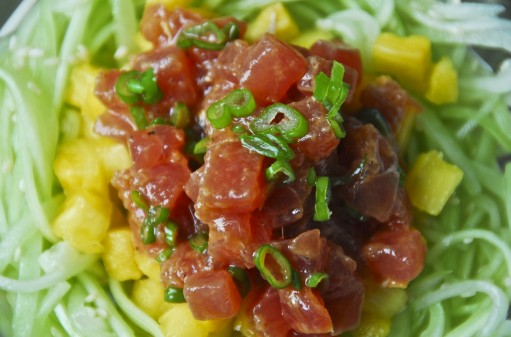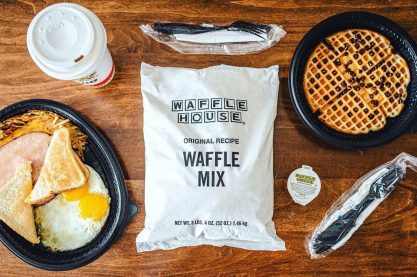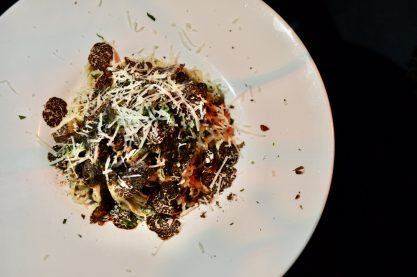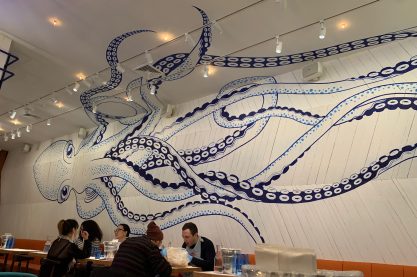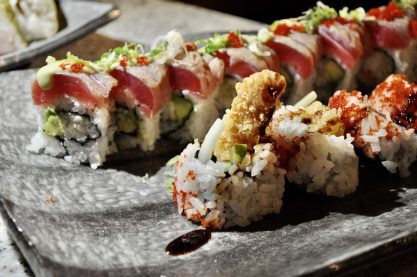Featured
FOOD: Raid an Asian Food Market Like a Pro
I am so unfashionably late to the Asian food party.
I went to Mission Chinese for the first time this past Saturday. I’m still not sure what “pho” is. And while I’ve been to Wong twice, I’ve yet to experience any sort of Momofuku. (Dear Everyone: I’m so sorry.)
Despite this massive fail, I still get asked for restaurant recommendations from friends and acquaintances all the time. To make up for my absurd void of knowledge in this area, I fill in the gaps with a little of what I do know: easy-to-use ingredients found across Asian cuisines. Walking into an Asian market can be a little intimidating for the uninitiated, but as I learned from working behind the kitchen line, there are plenty of tasty reasons to make the trip, no matter what cuisine you're cooking up tonight. I called upon some culinary pros I know to help me come up with a list of must-haves - including some of my own - and what the heck to do with a few of them:
Chef Liz B. recommends: rice noodles, Maesri-brand curry pastes, ready-made dumplings, flowering chives (the edible purple flower retains the fragrant onion-chive flavor and can be used as a garnish for a variety of dishes)
Chef Alicia W. recommends : fresh tofu, black sesame porridge, green bean starch (inexpensive starch/flour substitute for gluten-free baking)
Chef Alex P. recommends: chilis, kimchi
Chef Wylie D. (via Chef Alex P.) recommends: kombu (kelp, used to make dashi, a type of soup), dried mushrooms
Chef Jeff Weiss - the man who introduced me to pickled watermelon rinds and fostered my love of bacon (more on him here) - recommends: Panda-brand oyster sauce, gochujang (he uses this chili-sauce in his Korean BBQ sauce for grilled foods), Chinese broccoli a.k.a. Gai-lan (best simply "blanched and finished in a hot wok with garlic oil," he says)
And some things I’ve picked up along the way:
Daikon radish: this particular variety of radish is larger and milder than its smaller, more colorful cousins, but still harbors a little kick and a nice crunch, making it the perfect addition to slaws and pickles (note: peel first).
Wonton wrappers: Sure, you can make stuffed wontons; but you can also cut them diagonally and use them as dip-chips, or thinly slice them and fry them and try really hard not to eat them all put them on salads and stuff.
Sesame oil: the toasted variety helps make some supremely delicious marinade for tuna tartare – a recipe I made years ago paired it with cucumber, sesame seeds, pineapple, scallions, and toasted peanuts (hint: I made the cucumber "noodles" with a mandoline).
Fish Sauce, a.k.a. Nam Pla: It smells awful: get over it. This is a main ingredient in making various sauces, so it’s good to have a bottle stashed somewhere in the back of the cabinet. (Jeff W. recommends 3-Crab brand.)
Sriracha: I know you know already. But it’s on the list anyway. You don’t need to go to an Asian market to find it, but you might as well stock up while you’re there.
Benriner mandoline slicer: this cheap-looking, plastic mandoline is sharper, faster, and more reliable than anything fancier I’ve used. I asked my chef where to get one and he told me to head to our local Asian grocery market; somehow, it was less than $20. So check the store's housewares section to see if they've got one, then go home and make some delicious slaw with those daikon radishes you just bought.
So there you have it (for now). My thinking is that you'll try out some of these items, and be distracted in the kitchen long enough for me to get out, catch up on my Asian-Hipster joints, and make amends for my shortcomings as an aspiring Person Who Knows Stuff About Food.





